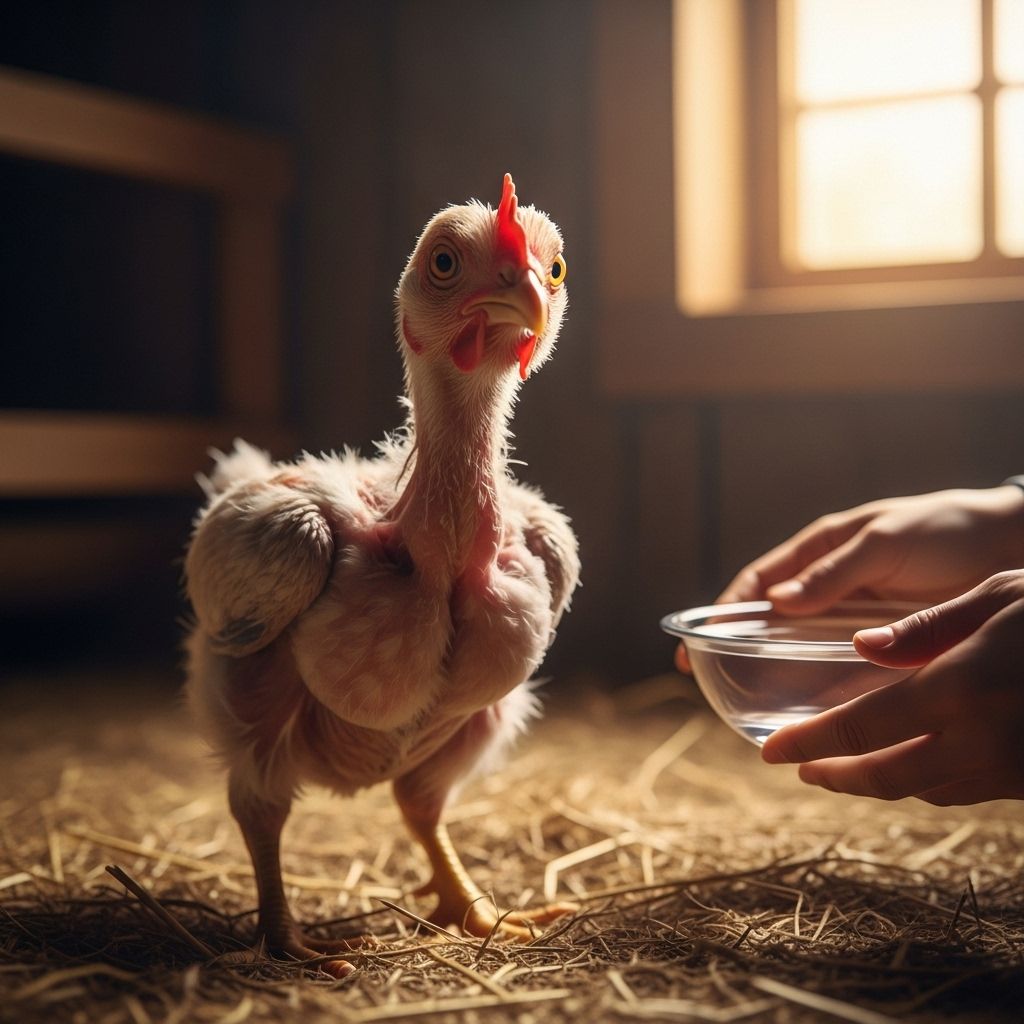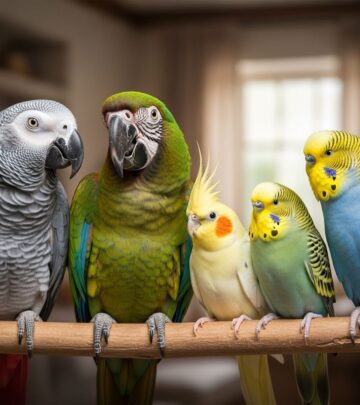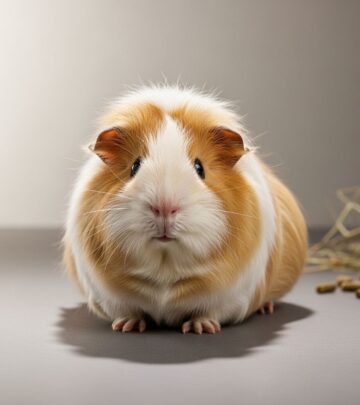Chicken Rescue Story: Inspiring Featherless To Fabulous Revival
One neglected chicken’s tale of survival, hope, and an astonishing transformation that will warm your heart.

Image: HearthJunction Design Team
From Featherless to Fabulous: The Unbelievable Journey of a Rescued Chicken
Every so often, a story emerges from the world of animal rescue that captures the very essence of hope, resilience, and the power of compassion. This is the remarkable journey of a featherless chicken who, rescued from unimaginable conditions, underwent a transformation that stunned her caregivers—and the world.
The Discovery: A Heartbreaking Scene in the Manure Pit
It was supposed to be a routine documentation of living conditions for egg-laying hens, but what rescuers found instead was a haunting tableau of hardship. Rows of cages stood empty, yet below them, in the depths of a manure pit, around 50 live hens struggled to survive. Many more had already succumbed to the toxic environment, highlighting the harsh reality of industrial egg production. Among the survivors was a completely featherless hen, her body weakened and spirit almost broken, yet her eyes still held a glimmer of life.
- Environmental Hazards: The manure pit was littered with both live and dead chickens. The survivors were caked in filth and barely recognizable, stripped of feathers by prolonged stress, malnutrition, and ammonia burns.
- Physical Condition: The rescued hens, including the featherless chicken, were estimated to be about 70 weeks old—considered ‘spent’ in the egg industry and left behind as their productivity waned.
- Emotional Impact: Rescuers described the experience as “sickening” but were galvanized to act.
Rescue and the Road to Recovery
The rescuers acted swiftly, gently gathering the emaciated birds and rushing them to safety. The featherless chicken, later lovingly named by her caregivers, was in need of immediate veterinary attention. Many hens exhibited broken legs and other injuries, attesting to the physical toll of their previous confinement. Yet, hope was not lost.
- Veterinarians provided critical care: hydration, wound treatment, and nutritional support.
- The hens were introduced to natural sunlight and grass for the first time in their lives—a pivotal moment in their rehabilitation.
- Special attention was given to the featherless chicken, whose skin was particularly vulnerable to changes in temperature and infection.
A First Glimpse of Freedom
For chickens raised in industrial farms, the outside world is foreign. Simple pleasures—like sunlight, grass, and fresh air—are denied. The transformation began the moment the rescued hens set foot on natural grass.
- New Sensations: The featherless hen and her companions explored the grassy enclosure, basked in sunlight, and pecked curiously at the earth. These simple acts marked the beginning of their psychological and physical healing.
- Natural Behaviors Resurface: Almost immediately, the hens displayed instinctive behaviors such as sunbathing (spreading their wings to soak up the warmth) and foraging for insects.
“It was really incredible to see these birds step on grass and see natural sunlight for the very first time in their lives. Immediately, they started exhibiting natural behaviors they would have never seen another chicken exhibit.” — Animal Rescue Volunteer
The Featherless Chicken: Against the Odds
The featherless hen was particularly fragile. Unable to regulate her body temperature, she required extra care:
- Heat lamps and insulated bedding provided warmth until her feathers could regrow.
- Special diets rich in protein and vitamins helped fuel feather regeneration.
- Daily health checks ensured early detection of infections or complications.
The Science of Feather Loss and Regrowth
Feather loss, or molting, is common in chickens, but in this case, the severity was due to stress, poor nutrition, and ammonia burns from waste buildup. The rescue team’s approach combined medical intervention with environmental enrichment to create optimal healing conditions.
| Cause of Feather Loss | Rescue Strategy | Recovery Timeline |
|---|---|---|
| Stress and Overcrowding | Quiet, open space away from other animals | Several weeks |
| Poor Nutrition | High-protein feed and vitamin supplements | Immediate improvement, full results in months |
| Ammonia Burns | Wound care and daily cleaning | Healing within weeks |
With perseverance, the featherless chicken’s transformation astounded everyone. Her feathers slowly but surely grew back, her energy returned, and her personality blossomed.
A Dramatic Transformation: Before and After
Photographs of the chicken’s journey serve as powerful reminders of resilience. The difference between her first days at the rescue and a few months later is almost unrecognizable.
- Before: Patchy, inflamed skin, weak posture, and a fearful demeanor.
- After: Lush, glossy feathers, bright eyes, confident strut, and visible joy in daily life.
“Gradually, the feathers came back a lot faster than I thought they would. The transformation is amazing.” — Rescuer’s Reflection
Transformation stories are not just heartwarming; they remind us of the beauty in rehabilitation. If you’re interested in the miraculous recoveries animals can undergo, check out how a dirty fish cup led to the dazzling colors of a rescued fish—a remarkable parallel of the power of care and dedication.
The Emotional Impact and Lessons Learned
For the humans involved, the rescued chicken’s transformation was both rewarding and life-changing. Watching a once-neglected animal flourish under proper care and affection reinforced the importance of animal welfare advocacy.
- Inspiration: Many volunteers cited the experience as transformative, inspiring them to continue advocating for farm animal rights.
- Hope: The story became a symbol of hope for rescued animals everywhere.
The Ongoing Journey: Advocacy and Change
Beyond the chicken’s personal journey, her story has sparked broader conversations about the egg industry, caged hens, and the importance of animal rescue efforts. Supporters have called for reforms, increased awareness, and more humane farming practices.
- Animal rescue organizations have seen a surge in support and interest.
- Education campaigns now use stories like this one to illustrate the power of compassion.
- Adoptions of rehabilitated chickens are celebrated, and many adopters find great joy in watching these birds thrive.
Why Feathers Matter: Beyond Appearance
Feathers are vital for a chicken’s health, providing insulation, weather protection, and even social communication. Regrowing feathers signaled not just aesthetic recovery, but a deep restoration of well-being.
- Feather quality reflects overall health and nutritional status.
- Chickens deprived of feathers often suffer from cold, sunburn, and a weakened immune system.
The Joy of a New Life
The story comes full circle as the once-featherless chicken settles into her new home. Surrounded by grass, sunshine, and loving care, she now enjoys the simple pleasures once denied to her. For her caregivers, every playful peck and contented cluck is a reminder of what’s possible with compassion and dedication.
Frequently Asked Questions (FAQs)
Why do some rescued chickens lose their feathers?
Feather loss in rescued chickens is often due to a combination of severe stress, malnourishment, overcrowding, and exposure to harmful chemicals like ammonia in manure. In industrial farms, these conditions are unfortunately common, leading to extensive suffering and physical damage.
How can people help chickens in need?
Supporting reputable animal rescue organizations is the most direct way to help. Volunteering, donating, advocating for better living conditions, and adopting rescued hens all contribute to improved animal welfare. Raising awareness about the realities of egg production is also crucial.
Is it possible for featherless chickens to fully recover?
Yes, with proper nutrition, medical care, and a stress-free environment, most featherless chickens can regrow their feathers and regain their health. The timeline varies, but dramatic improvements are often seen within a few months.
Do rescued chickens make good pets?
Absolutely. Many adopters report that rehabilitated chickens are affectionate, intelligent, and even playful. Their unique personalities often shine once they’re given the chance to live safely and comfortably.
What can this transformation teach us?
The journey from neglect to thriving serves as a poignant reminder of the resilience of animals and the difference that empathy and care can make. It challenges us to reconsider our relationships with farm animals and strive for more humane treatment everywhere.
Conclusion
The story of the featherless rescued chicken—her suffering, her perseverance, and her astonishing transformation—stands as a testament to hope and the extraordinary impact of compassion. As more people become aware of these stories, the movement for animal welfare grows stronger, promising a brighter future for all creatures, great and small.
References
Read full bio of Shinta












